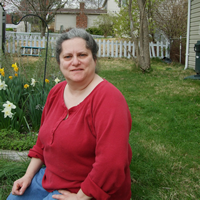I'm kind of noodling about how I'd teach Wicca 101. I'd love some feedback! I've got ideas for the first three classes (I expect that there would be 10 to 13 classes in the series.
Class 1 – nature, not nurture.
In this class everyone is outside for the entire class. Summer is the best time for it. Tick, and maybe mosquito repellent is recommended. Go out looking at wild flowers. See that sex is everywhere in nature. See that all the sex isn’t hetero – much of it is a 3-way of one male flower part, one female flower part, and it doesn’t work without a female bee in the mix (or wasps or flies of any gender, for that matter). Note that some flowers are male only (easiest to see in spring, when mulberries and pine are spewing semen/pollen all over the place), some are female only, some are hermaphrodites.
Actually, with the mulberries, I suppose Wind/Air takes the place of Spirit. I'll have to ponder the implications of that, besides the obvious connection of air/east/beginnings.
Also note that sex is, sometimes, NO WHERE in nature. Ferns – a topic dear to MY heart – are asexual, with a whole different type of reproduction that includes not just spores but a haploid version.
Note the yews, with sexed plants PLUS asexual spreading/survival.
Meet some chickens, where the female are XY and the males are XX. And where XY females have been known to become fully functioning males if the flock needs it. Thus, transexuality is build into nature, too.
From here, the discussion goes into how polarity is not duality, it is subtle, shifting, mutable. Much of Wicca’s theology and magic is based on the dance of polarity. Remember this when talking of The God and The Goddess. Mutable. Dance. Subtle.

To anyone who looks into nature, it is clear that heterosexuality isn't the only thing, or the only "natural" thing!
ReplyDeleteFerns aren't asexual--unless you meant to state they are spore-formers rather than gamete formers-- they, like all plants, show the alternation of generations between spore-forming and gamete-forming plants, and with ferns and mosses, the two generations are more closely equal in overall size. As we go on to flowering plants, the two generations become more unequal in size, with the gamete-formers becoming microscopic and contained within the sporophyte generation.